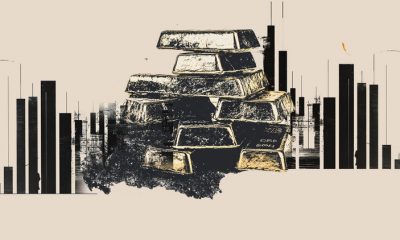

others
US Dollar steady ahead of pivotal week with Powell, NFP and US Primaries ahead – Crypto News
- The US Dollar trades in the green around the US opening bell and start for this week.
- Markets brace for quite some headline risks ahead of the US Jobs Report on Friday.
- The US Dollar Index still orbits around 104.00 though could be seen choosing direction after this week.
The US Dollar (USD) is trading very binary with mostly green against most major peers, in (Central) Europe and Commonwealth, while Asian currencies are a touch stronger than the Greenback this Monday, ahead of a very eventful week. Two main elements this week will be the hearing of the US Federal Reserve Chairman Jerome Powell, who is set to face Senator Elisabeth Warren and other politicians in Congress and the US Jobs Report on Friday. Meanwhile headline flow out of the Chinese National People’s Congress and US President Joe Biden’s State of the Union could trigger some intraday volatility.
On the economic front, all eyes of course will be on the usual suspects ahead of the US Jobs Report with the ADP Nonfarm Employment number and the JOLTS Job Openings report on Wednesday. As always, no connection between ADP and Nonfarm Payrolls on Friday, though enough to create volatility besides the more than five US Fed speakers besides Jerome Powell that are due to release comments on the markets.
Daily digest market movers: Watch the news monitors this week
- A brief moment of stress when social media reported an object had crashed within the Polish boarder. After a few moments it turned out to be a weather balloon.
- Head of the Philadelphia Fed Patrick Harker is due to take the stage later this Monday around 16:00 CET.
- The US Treasury will head to markets to allocate a 3-month and a 6-month bill near 16:30 GMT.
- Japan’s Nikkei Index has breached 40,000 for the first time ever.
- Nikki Haley won the Columbia District (Washington DC) Primary, snapping the winning streak of former US President Donald Trump.
- A few elements to already note in your calendar for this week which could bear some important headline risk:
- China holds its National Party Congress from March 5 to March 11. Be on the lookout for any headlines on easing and stimulus support for Chinese markets.
- Super Tuesday is ahead as well with Primaries for both the Republicans and Democrats in 17 states.
- US President Joe Biden is due to release its State of the Union on Thursday.
- Equities are looking for direction with no real outliers to report. Only element worth mentioning in the far end of the risk spectrum is that Bitcoin is soaring near 4% this Monday. US equities open up in the red with the Dow Jones down over 0.50% and Apple facing a 1.8 billion EUR fine from the EU.
- According to the CME Group’s FedWatch Tool, expectations for a Fed pause in the March 20 meeting are at 97%, while chances of a rate cut stand at 3%.
- The benchmark 10-year US Treasury Note trades around 4.23%, roughly sideways seeing last week’s range.
US Dollar Index Technical Analysis: Will the needle move this week?
The US Dollar Index (DXY) enters another week of being caught between what can only be described as the pitchfork of Simple Moving Averages (SMA). On the topside the 100-day SMA (104.63) is making sure the DXY does not escape any higher, while the 55-day SMA (103.51) makes sure the Greenback does not slip back to the lower levels of 2024. This week is bearing more headline risk and events which could finally move the needle and stage a breakout either way for the DXY.
To the upside, the 100-day Simple Moving Average (SMA) near 103.94 is being well respected this Monday. Should the US Dollar be able to cross above it, to 104.60, 105.12 is the next key level to keep an eye on. One step beyond there comes 105.88, the high from November 2023. Ultimately, 107.20 – the high of 2023 – could come back into scope.
Looking down, the 200-day Simple Moving Average at 103.74 has been broken a few times recently, though it has not seen a daily close below it last week, showcasing its importance. The 200-day SMA should not let go that easily though, so a small retreat back to that level could be more than granted. Ultimately, should it lose its force, prices could fall to 103.22, the 55-day SMA, before testing 103.00.
Central banks FAQs
Central Banks have a key mandate which is making sure that there is price stability in a country or region. Economies are constantly facing inflation or deflation when prices for certain goods and services are fluctuating. Constant rising prices for the same goods means inflation, constant lowered prices for the same goods means deflation. It is the task of the central bank to keep the demand in line by tweaking its policy rate. For the biggest central banks like the US Federal Reserve (Fed), the European Central Bank (ECB) or the Bank of England (BoE), the mandate is to keep inflation close to 2%.
A central bank has one important tool at its disposal to get inflation higher or lower, and that is by tweaking its benchmark policy rate, commonly known as interest rate. On pre-communicated moments, the central bank will issue a statement with its policy rate and provide additional reasoning on why it is either remaining or changing (cutting or hiking) it. Local banks will adjust their savings and lending rates accordingly, which in turn will make it either harder or easier for people to earn on their savings or for companies to take out loans and make investments in their businesses. When the central bank hikes interest rates substantially, this is called monetary tightening. When it is cutting its benchmark rate, it is called monetary easing.
A central bank is often politically independent. Members of the central bank policy board are passing through a series of panels and hearings before being appointed to a policy board seat. Each member in that board often has a certain conviction on how the central bank should control inflation and the subsequent monetary policy. Members that want a very loose monetary policy, with low rates and cheap lending, to boost the economy substantially while being content to see inflation slightly above 2%, are called ‘doves’. Members that rather want to see higher rates to reward savings and want to keep a lit on inflation at all time are called ‘hawks’ and will not rest until inflation is at or just below 2%.
Normally, there is a chairman or president who leads each meeting, needs to create a consensus between the hawks or doves and has his or her final say when it would come down to a vote split to avoid a 50-50 tie on whether the current policy should be adjusted. The chairman will deliver speeches which often can be followed live, where the current monetary stance and outlook is being communicated. A central bank will try to push forward its monetary policy without triggering violent swings in rates, equities, or its currency. All members of the central bank will channel their stance toward the markets in advance of a policy meeting event. A few days before a policy meeting takes place until the new policy has been communicated, members are forbidden to talk publicly. This is called the blackout period.
-

 Blockchain1 week ago
Blockchain1 week agoCrypto Hedge Fund Veterans Seek $100M to Buy BNB, Emulating Saylor’s Bitcoin Strategy – Crypto News
-

 Blockchain1 week ago
Blockchain1 week agoChange In US Crypto Laws May Affect Charges In Do Kwon’s Criminal Case – Crypto News
-

 others1 week ago
others1 week agoXAG/USD extends decline as safe-haven flows ease – Crypto News
-

 Technology1 week ago
Technology1 week agoBranded smartwatches under ₹5000 for style and functionality: Top 10 picks for everyday wear – Crypto News
-

 Blockchain1 week ago
Blockchain1 week agoBest Crypto to Buy as Polymarket Nears $1B Valuation – Crypto News
-
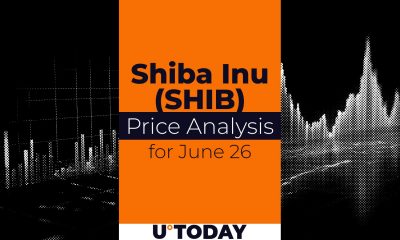
 Cryptocurrency7 days ago
Cryptocurrency7 days agoSHIB Price Prediction for June 26 – Crypto News
-

 others6 days ago
others6 days agoGold retreats while Fed Powell and President Trump clash over interest rates – Crypto News
-

 Cryptocurrency5 days ago
Cryptocurrency5 days agoFriday charts: Retail is one-upping Wall Street – Crypto News
-

 others1 week ago
others1 week agoPolemos Launches PLMS Token On MEXC and Uniswap, Advancing Web3 Gaming Infrastructure – Crypto News
-

 Cryptocurrency1 week ago
Cryptocurrency1 week agoStory (IP) surges after whales buy 16M tokens – Crypto News
-

 Blockchain1 week ago
Blockchain1 week agoInvestor Anthony Pompliano Launches $1B Bitcoin Treasury Firm – Crypto News
-

 Blockchain1 week ago
Blockchain1 week agoBitcoin Price Could Rally To $110,000 ATH As These Macroeconomic Factors Align – Crypto News
-

 Technology7 days ago
Technology7 days agoTop 10 air coolers for monsoon: Handpicked products for effective cooling from trusted brands – Crypto News
-

 others6 days ago
others6 days agoEUR/JPY steadies near 169.00 as traders await the next catalyst – Crypto News
-

 Technology1 week ago
Technology1 week agoElon Musk’s Tesla Robotaxi launches in Austin: Here’s how much it costs – Crypto News
-

 others1 week ago
others1 week agoSolana (SOL) and Aptos (APT) Named As Top Candidates for Wyoming’s Proposed Stable Token Program – Crypto News
-

 Blockchain1 week ago
Blockchain1 week agoCrypto ETPs Post $1.2B Inflows While Spot Prices Drop – Crypto News
-

 others1 week ago
others1 week agoRich Dad Poor Dad Author Says ‘Biggest Crash in History’ Approaching While Baby Boomers Lose Retirements to Inflation – Crypto News
-

 Blockchain1 week ago
Blockchain1 week agoAnchorage to Integrate Uniswap to Wallet for Insitutional DeFi – Crypto News
-
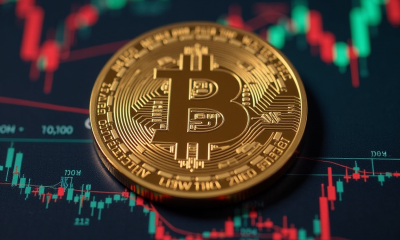
 Cryptocurrency1 week ago
Cryptocurrency1 week agoBitcoin rallies to $106K on Mideast ceasefire news; Circle shares continue explosive climb – Crypto News
-
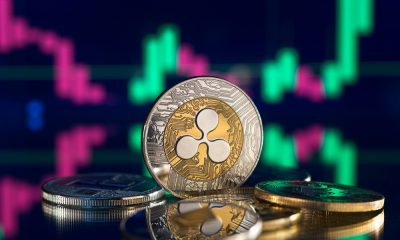
 Cryptocurrency1 week ago
Cryptocurrency1 week agoWhat next for XRP after breaking above the $2.15 resistance? – Crypto News
-

 Cryptocurrency1 week ago
Cryptocurrency1 week agoBitcoin alert! – Should BTC traders brace for $82K in a market reset? – Crypto News
-

 Technology1 week ago
Technology1 week agoOpenAI quietly removes all mention of Jonny Ive’s ‘IO’, but deal stays on: What you need to know – Crypto News
-
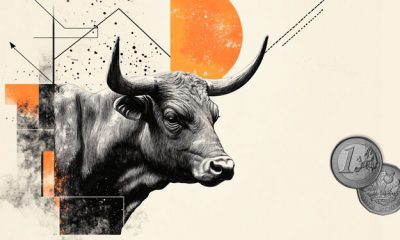
 others1 week ago
others1 week agoEUR/GBP gathers strength above 0.8550 ahead of Eurozone/UK PMI releases – Crypto News
-

 Cryptocurrency1 week ago
Cryptocurrency1 week agoBitcoin bounces after dip to under $99K – Crypto News
-

 others1 week ago
others1 week agoWalmart Ordered To Pay $10,000,000 After Retail Giant Allegedly ‘Turned a Blind Eye’ to Scammers Exploiting Customers – Crypto News
-

 Blockchain1 week ago
Blockchain1 week agoBitcoin Wobbles? Metaplanet Buys Big, Breaks $1 Billion Mark – Crypto News
-

 others1 week ago
others1 week agoIndian Rupee recovers as Oil falls post Iran strike, Fed dovish signals limit US Dollar strength – Crypto News
-

 Blockchain1 week ago
Blockchain1 week agoBearish Breakdown Meets Bullish Flag, Which Will Prevail? – Crypto News
-

 Blockchain1 week ago
Blockchain1 week agoBearish Breakdown Meets Bullish Flag, Which Will Prevail? – Crypto News
-

 Blockchain1 week ago
Blockchain1 week agoCutting Block Times To Boost Performance – Crypto News
-

 others1 week ago
others1 week agoUS stocks downplay Iran retaliation concerns as indices edge higher – Crypto News
-

 others1 week ago
others1 week agoBank of America, Netflix and Apple Customers Targeted by Widescale Google Search Scams: Report – Crypto News
-

 others1 week ago
others1 week agoTariffs may be adding a quarter of a percentage point to inflation right now – Crypto News
-

 Technology1 week ago
Technology1 week agoUS judge rules Anthropic’s use of books for AI training is fair use: All you need to know – Crypto News
-

 Technology1 week ago
Technology1 week agoOpenAI and Jony Ive’s AI hardware ambitions hit roadblock over trademark dispute: Report – Crypto News
-

 Technology1 week ago
Technology1 week agoBest laptops under ₹40,000 (June 2025) with latest processors, SSD storage, and Windows 11 features, Top 10 picks – Crypto News
-

 Technology1 week ago
Technology1 week agoTurkey plans stricter crypto rules to fight money laundering – Crypto News
-

 others1 week ago
others1 week agoWinnebago Industries (WGO) tops Q3 earnings estimates – Crypto News
-
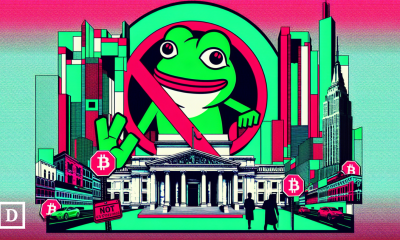
 De-fi7 days ago
De-fi7 days agoBarclays to Ban Crypto Purchases via Credit Card – Crypto News
-

 others6 days ago
others6 days agoAI-Focused Layer-1 Blockchain Altcoin SAHARA Flames Out Following New Binance Listing – Crypto News
-

 Cryptocurrency5 days ago
Cryptocurrency5 days agoTRON price forecast as USDT supply surpasses $80 billion – Crypto News
-

 De-fi1 week ago
De-fi1 week agoVisa Expands Stablecoin Push to EMEA With Yellow Card Partnership – Crypto News
-

 Blockchain1 week ago
Blockchain1 week agoHAI Token Drops After Private Key Leak – Crypto News
-

 De-fi1 week ago
De-fi1 week agoBitcoin Slides Below $102,000 as Israel–Iran Clash Triggers $500 Million Crypto Liquidations – Crypto News
-

 Technology1 week ago
Technology1 week agoTop 10 8kg washing machines in June 2025 worth checking if you want a balance of space, speed, and value – Crypto News
-

 others1 week ago
others1 week agoFactSet research (FDS) Q3 earnings lag estimates – Crypto News
-

 De-fi1 week ago
De-fi1 week agoPayments Giant Fiserv to Roll Out ‘Bank-Friendly’ Stablecoin on Solana – Crypto News
-

 Technology1 week ago
Technology1 week agoGoogle introduces AI-powered Chromebook Plus 14: Features, specifications, and more – Crypto News
-

 Cryptocurrency1 week ago
Cryptocurrency1 week agoPolymarket ‘politics’ markets surge, Celestia rethinks consensus – Crypto News



![IONQ Elliott Wave technical analysis [Video]](https://dripp.zone/news/wp-content/uploads/2025/07/IONQ-Elliott-Wave-technical-analysis-Video-Crypto-News-400x240.jpg)
![IONQ Elliott Wave technical analysis [Video]](https://dripp.zone/news/wp-content/uploads/2025/07/IONQ-Elliott-Wave-technical-analysis-Video-Crypto-News-80x80.jpg)


